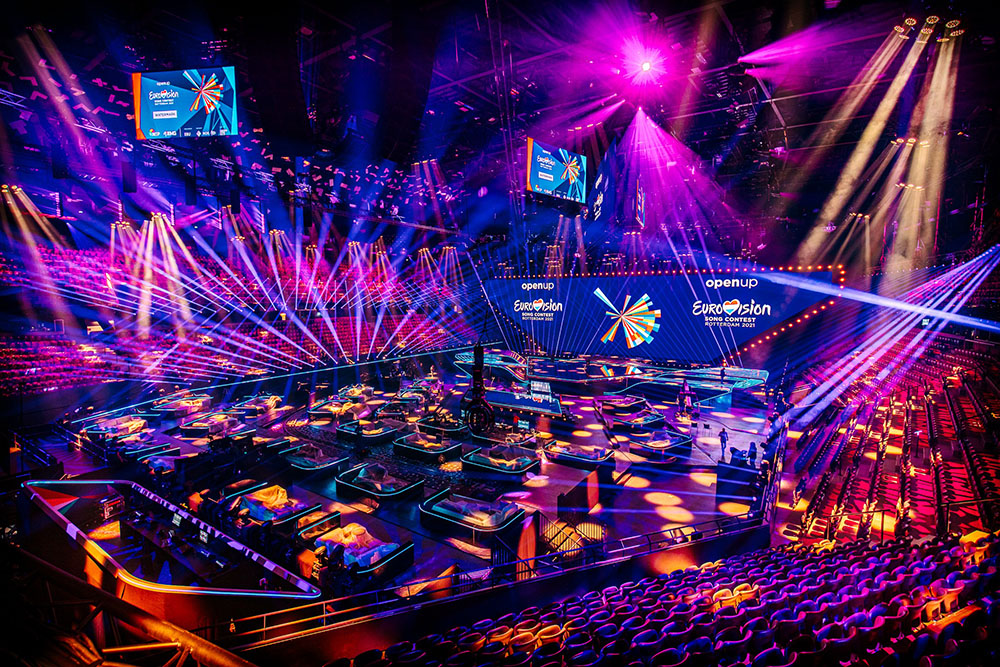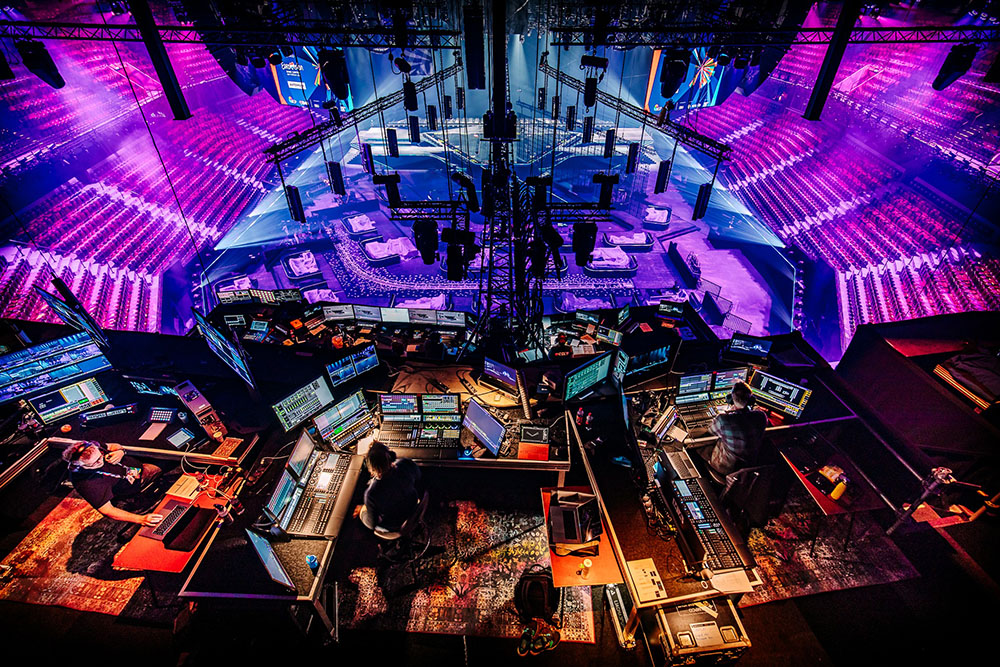
In the aftermath of the Second World War, the European Broadcasting Union (EBU) was founded on 12 February 1950. Its aim was to bring together public service broadcasters from across Europe, to strengthen ties between countries, and share broadcasting knowledge and experience.
The EBU also set up the Euroradio and Eurovision networks to exchange programmes, news and sports content across its member countries. The hope was that with closer cultural connections between countries, they could reduce the chances of another devastating war. While I can’t comment on its ability to stop wars, it has been a successful organisation, growing from 23 founding countries to now having 115 members across 56 countries, along with 31 associate members across the world. The current potential audience reach of EBU broadcasts is a staggering 1.07 billion people.
The most famous output for all those eager viewers is, of course, the greatest music competition in the history of the world: the annual Eurovision Song Contest. The first contest was held in Lugano, Switzerland back in 1956 and had the catchy title of ‘Grand Prix Eurovision de la Chanson Européenne’. It was based on the successful Sanremo Music Festival, and had just 7 countries participating, so each performed two songs. The first winner was Lys Assia from Switzerland, singing ‘Refrain’.
The broadcast also acted as a bit of an experiment for the EBU, because they could test the limits of live TV broadcast technology, sending a signal featuring singers and a live orchestra across Europe. In reality, there were so few televisions at the time the contest was primarily a radio broadcast, but this didn’t stop Eurovision deciding to continue pushing boundaries. The initial competition had been a huge success, and it was beginning its rise to become a cultural broadcasting icon.
The challenges of coordinating a live broadcast beamed into millions of homes never went away. The steady increase of countries wanting to take part (eligible by being members of the EBU, in case you wondered how Australia got involved), plus the development of new broadcasting technology, means that Eurovision has kept evolving to stay on our screens.
In 1968 Eurovision was first broadcast in colour, despite a lack of colour televisions across Europe. After successfully testing the new broadcasting technology, Eurovision remained in colour ever since. Winning Spanish contestant Massiel, live from the Royal Albert Hall in London, was also beamed into more homes than ever across Eastern Europe and into Tunisia.
Here’s 1968 winner Massiel in colour with ‘La, la, la’:
The infamous voting system, which has changed over the years but now involves a combination of a jury and public voting, must give the producers sleepless nights in the run up to the competitions. Telephones had been used since 1957 to get the results from each country’s jury, but the introduction of satellite link ups in 1994 gave the opportunity for a video feed. The long pauses due to line delay have, reassuringly, remained to this day. Public televoting was introduced for five countries in 1997 to give viewers a say in the winner. The successful trial led to it being rolled out in all countries wherever possible the next year, with SMS voting and via the Eurovision app being added in recent years.
(Probably the most famous thing about the 1994 competition was the interval show: Riverdance. Sorry satellite links…)
A rapid expansion in the number of contestants in Eurovision happened during the early 1990s, as former Eastern Bloc countries gained independence. In 1993 the first qualifying competitions were set up, because there were so many applicants the show would be too long. This eventually morphed into the semi-final system in place today, where all countries except that year’s host and the ‘big five’ (France, Germany, UK, Spain and Italy) have to win spots for the final.
It’s probably not a coincidence that as the competitor numbers expanded, the staging from some countries has become more elaborate and spectacular. Huge interactive projections, giant LED screens, elaborate dance routines, expensive costumes, even grand pianos on fire have all been used to grab the audience and jury’s attention and votes.
One of the more spectacular recent stagings was Sergey Lazarev’s ‘You Are the Only One’ in 2016:
Not that this approach always wins, but it certainly makes for an excellent show! It has increased the complexity of the arrangements, as this shot of the TV gallery from this year’s competition shows.

From humble beginnings in 1956 as a competition to bring a post-war Western Europe back together, Eurovision is now a globally viewed show. For example, it had 220 million TV viewers and unique views on YouTube across the whole week leading up to the 2019 final.
However, viewing figures alone don’t show the cultural impact that the contest has had, from launching superstar bands like ABBA, to having a huge LGBTQ+ following, to inspiring an Academy Award-nominated film, Eurovision Song Contest: The Story of Fire Saga. Announced within the last few weeks, Eurovision will also have a new stateside competition—American Song Contest—next year, reflecting the global importance of the Eurovision brand. None of this would be possible without the EBU and Eurovision network, embracing new technologies to broadcast to us all.
This post was updated on 11 May 2023.